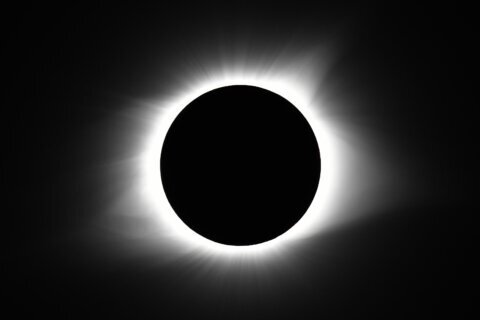NASA’s Commercial Lunar Payload Services program is hoping to see the fruits of its yearslong efforts to have commercial partners send missions to the moon in support of NASA’s Artemis program and lunar research.
As stated by NASA in its news release, “NASA will kick off 2024 by sending five payloads to the moon aboard Astrobotic’s Peregrine lander, Astrobotic Peregrine Mission One. The inaugural launch under the agency’s CLPS (Commercial Lunar Payload Services) initiative will blast off Monday, Jan. 8, from Cape Canaveral, Florida, on a United Launch Alliance Vulcan rocket.”
As related via an email to me from Robert Garner, the news chief at the Office of Communications, Goddard Space Flight Center, “Part of the payload includes two efforts with ties to Goddard: The Peregrine Ion-Trap Mass Spectrometer (PITMS) will explore how water molecules, possibly created on the surface by the solar wind, are released and move around the moon as the lunar surface heats up during the sunny part of the lunar day.”
Other NASA payloads aboard Peregrine One will “measure radiation and gases around the lander, and evaluate the lunar exosphere (the thin layer of gases on the moon’s surface),” according to the news release.
“These measurements will improve our understanding of how solar radiation interacts with the lunar surface. The payloads will also provide data to NASA’s Lunar-VISE (Lunar Vulkan Imaging and Spectroscopy Explorer) instrument suite, slated to land on the Gruithuisen Domes in 2026,” the news release stated.
Daniel Cremons serves as the deputy principal investigator for the Laser Retroflector Array on the mission.
“The LRA is a collection of eight retroreflectors that enable precision laser ranging, which is a measurement of the distance between the orbiting or landing spacecraft to the LRA on the lander. The LRA is a passive optical instrument and will function as a permanent location marker on the Moon for decades to come,” the email said.
Astrobotic’s Peregrine lander is going to attempt its lunar landing on Feb. 23, 2024, in Sinus Viscositatis, the “Bay of Stickiness,” which was a change from the original landing site of Lacus Mortis — in the northeast quadrant of the lunar nearside of the Moon. The change was made to incorporate more potential science returns from the mission.
As explained by NASA in a mission blog entry, “the landing site to a mare — an ancient hardened lava flow — outside of the Gruithuisen Domes, a geologic enigma along the mare/highlands boundary on the northeast border of Oceanus Procellarum, or Ocean of Storms, the largest dark spot on the Moon. The Domes are suspected to have been formed by a sticky magma rich in silica, similar in composition to granite.
On Earth, formations like these need significant water content and plate tectonics to form, but without these key ingredients on the Moon, lunar scientists have been left to wonder how these domes formed and evolved over time. With the selection of the Lunar Vulkan Imaging and Spectroscopy Explorer (Lunar-VISE), a suite of instruments that will investigate the origin and composition of the Gruithuisen Domes in 2026 on a separate CLPS delivery, relocation of Astrobotic’s Peregrine CLPS flight to a mare near the Domes will present complementary and meaningful data to Lunar-VISE without introducing additional risk to the lander.”
How to tune in
You can participate in the mission with NASA virtually. Live coverage is set for 1:30 a.m. and will air on NASA+, NASA Television, the NASA app and the agency’s website.
Learn more about CLPS activities by following the CLPS blog, @NASAMoon and @NASAArtemis on Twitter, as well as the NASA Moon Facebook and Artemis Instagram accounts.
This is an exciting time for moon lovers like me as the spacefaring Nations of the world are gearing up to return to the moon and stay this time. And 2024 is going to be a busy year for lunar and planetary spacecraft missions.
I grew up during the fledging days of human spaceflight that ultimately led to America sending Apollo program which is scheduled to return humans to lunar orbit later this year for the first time since December 1972.
I hope to see the next humans on the moon and the development of the moon as a thriving human community.
Follow me on Facebook, X (Twitter) and my daily blog to keep up with the latest news in astronomy and space exploration. You can email me at skyguyinva@gmail.com.
Get breaking news and daily headlines delivered to your email inbox by signing up here.
© 2024 WTOP. All Rights Reserved. This website is not intended for users located within the European Economic Area.






